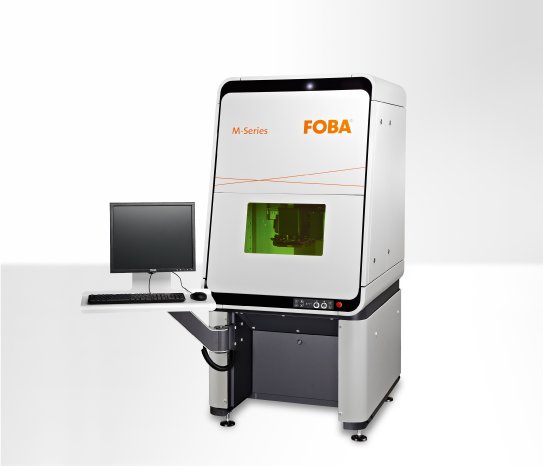The purpose of the project thesis of a student of the applied materials degree program was to develop suitable laser parameter combinations for corrosion-resistant annealing marking on class 1.4021 / X20Crt13 type stainless steel. The resistance of the laser markings was verified using a cooking test in accordance with DIN EN ISO 13402. The effects of passivation, which is necessary in the context of instrument manufacturing, but which can lead to fading of the laser-marked characters, were also taken into particular account.
The project work was able to demonstrate that reproducible, corrosion-resistant marking of data matrix codes can be achieved using various parameter combinations. For this purpose, the data matrix codes were analyzed microscopically, macroscopically and using a code tester. After a corrosion test and passivation, the data matrix codes generated could easily be read by a blackness measuring device and a code checking device.
The results presented are helpful for providing manufacturers of medical instruments and implants with a basic guideline for the practical identification of suitable parameter combinations. This also supports in complying with the marking requirements of the European Medical Device Regulation (MDR), which will apply from 2020. However, all parameters but must be adapted individually in each case, depending on the material actually used and the specific employment of each application.
Perspectively, the scientific determination of laser parameters is qualified for a large number of possible future studies, e.g. based on even more extended corrosion tests, or with a view to reducing the marking time as well as to additional substrate materials. The large number of metals and plastics used in medical technology suggests that laser marking offers itself as a comprehensive research field with a high degree of practical relevance, especially since the complex technological processes on the material surface have often not yet been researched in detail.
In addition, FOBA uses the study results to further develop its own marking software, in particular the parameter expert function contained therein. This function facilitates the parameter determination for the user by means of predetermined values that are already preset in order to suit with and facilitate the work with different materials.
FOBA Laser Marking + Engraving
www.fobalaser.com
Pictures for editorial use can be downloaded:
https://www.fobalaser.com/news-press/article/scientifically-determined-laser-parameters-for-udi-marking/
Background
The European Medical Device Regulation 2017/745, which came into force in 2017 and will apply from 2020, provides regulations for market surveillance of medical devices with the aim of improving patient safety. Among other things, this also regulates the direct labeling of all products with a unique product number EPN (UDI Unique Device Identification), which contains information on the manufacturer, product and batch numbers
The EPN / UDI is depicted both in human readable characters and as a machine-readable two-dimensional data matrix code and must be applied directly to the product. This is to ensure that the label remains perfectly legible even after the outer packaging has been removed and after long-term use of the medical device, in order to ensure traceability over the entire product life cycle.
Reusable surgical instruments made of stainless steel as well as implants need to withstand increased wear, like exposure to body fluids, multiple cleaning and sterilization processes or mechanical stress. The demands placed on laser marking are correspondingly high, the marks must not fade or corrode over time.
Laser marking technology is the only process that can meet the requirements for UDI labeling, both in terms of the quality of the characters and consecutive serial numbering. Appropriate software interfaces transfer the necessary data into the marking process.
In the course of medical device manufacturing, the UDI code is applied to the finished part at the end of the production process. It is a legal requirement that, in the case of Stainless steel products, the material changes caused by the laser marking on the surface are reworked by passivation after the marking process, thereby making them corrosion-free.
FOBA’s compact, closed-loop M-Series laser marking workstations are equipped with fiber or UV laser heads. An optional camera system integrated in the marking head is used for automated part recognition and mark alignment. Special features of FOBA's camera-controlled marking units are the holistic marking principle "HELP", which, in addition to IMP (Intelligent Mark Positioning), includes pre- and post-marking part and character validation. An additional marking feature, FOBA Mosaic, helps to carry out laser marking in a highly efficient manner, even without part fixtures.


